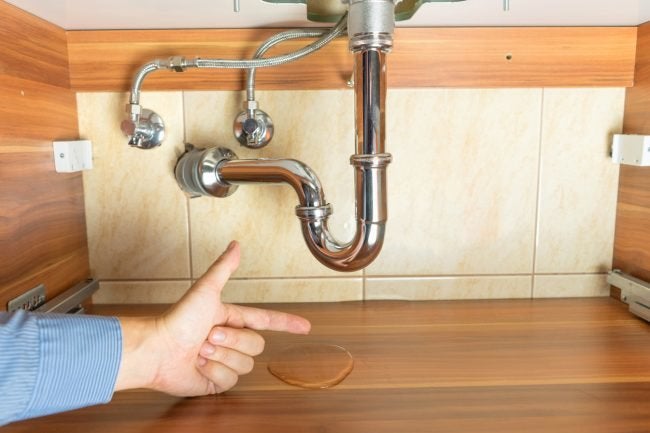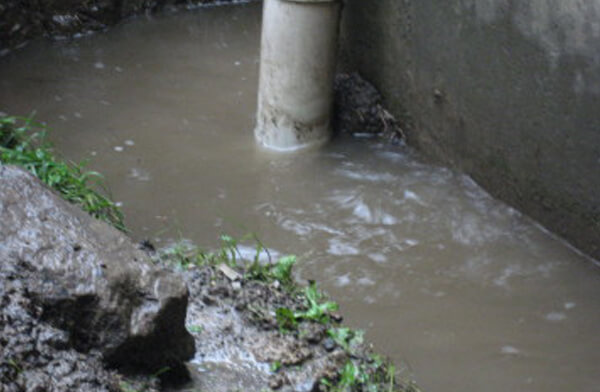We've uncovered the article pertaining to Detecting hidden plumbing leaks below on the web and think it made sense to write about it with you over here.

Early detection of dripping water lines can mitigate a prospective calamity. Some tiny water leaks may not be noticeable.
1. Take A Look At the Water Meter
Every home has a water meter. Inspecting it is a proven way that aids you discover leaks. For starters, turn off all the water resources. Make sure nobody will flush, use the tap, shower, run the cleaning equipment or dish washer. From there, most likely to the meter as well as watch if it will certainly alter. Considering that nobody is utilizing it, there should be no motions. If it relocates, that suggests a fast-moving leakage. Similarly, if you discover no changes, wait an hour or 2 as well as check back again. This implies you may have a slow-moving leakage that can also be underground.
2. Check Water Usage
Examine your water costs and also track your water consumption. As the one paying it, you must notice if there are any type of discrepancies. If you identify sudden changes, despite your consumption coinciding, it means that you have leaks in your plumbing system. Bear in mind, your water costs must drop under the very same variety each month. An unexpected spike in your costs shows a fast-moving leakage.
A consistent rise every month, also with the same routines, shows you have a sluggish leak that's also gradually escalating. Call a plumber to thoroughly examine your building, especially if you feel a warm location on your flooring with piping underneath.
3. Do a Food Coloring Test
When it comes to water usage, 30% comes from commodes. If the shade somehow infiltrates your bowl throughout that time without flushing, there's a leakage in between the tank and also bowl.
4. Asses Outside Lines
Do not fail to remember to check your exterior water lines too. Test spigots by attaching a yard hose pipe. Needs to water seep out of the link, you have a loosened rubber gasket. Change this as well as make certain all links are limited. If you've obtained an automatic sprinkler, it will aid get it properly checked out and maintained yearly. One little leak can lose tons of water as well as increase your water bill.
5. Evaluate as well as Evaluate the Scenario
House owners must make it a behavior to check under the sink counters and even inside cabinets for any kind of bad odor or mold development. These 2 red flags show a leakage so prompt interest is required. Doing regular assessments, also bi-annually, can save you from a major issue.
Inspect for stainings and compromising as a lot of appliances and pipelines have a life expectancy. If you presume dripping water lines in your plumbing system, don't wait for it to intensify.
Early discovery of dripping water lines can reduce a prospective calamity. Some little water leaks may not be visible. Examining it is a guaranteed way that helps you uncover leaks. One little leak can waste lots of water as well as increase your water bill.
If you presume dripping water lines in your plumbing system, don't wait for it to rise.
WARNING SIGNS OF WATER LEAKAGE BEHIND THE WALL
PERSISTENT MUSTY ODORS
As water slowly drips from a leaky pipe inside the wall, flooring and sheetrock stay damp and develop an odor similar to wet cardboard. It generates a musty smell that can help you find hidden leaks.
MOLD IN UNUSUAL AREAS
Mold usually grows in wet areas like kitchens, baths and laundry rooms. If you spot the stuff on walls or baseboards in other rooms of the house, it’s a good indicator of undetected water leaks.
STAINS THAT GROW
When mold thrives around a leaky pipe, it sometimes takes hold on the inside surface of the affected wall. A growing stain on otherwise clean sheetrock is often your sign of a hidden plumbing problem.
PEELING OR BUBBLING WALLPAPER / PAINT
This clue is easy to miss in rooms that don’t get much use. When you see wallpaper separating along seams or paint bubbling or flaking off the wall, blame sheetrock that stays wet because of an undetected leak.
BUCKLED CEILINGS AND STAINED FLOORS
If ceilings or floors in bathrooms, kitchens or laundry areas develop structural problems, don’t rule out constant damp inside the walls. Wet sheetrock can affect adjacent framing, flooring and ceilings.
https://www.servicemasterbyzaba.com/blog/how-to-detect-water-leakage-in-walls/

We were made aware of that report about Top leak detection hacks from a good friend on another blog. Please take a moment to share this page if you enjoyed it. We love reading our article about Detecting hidden plumbing leaks.